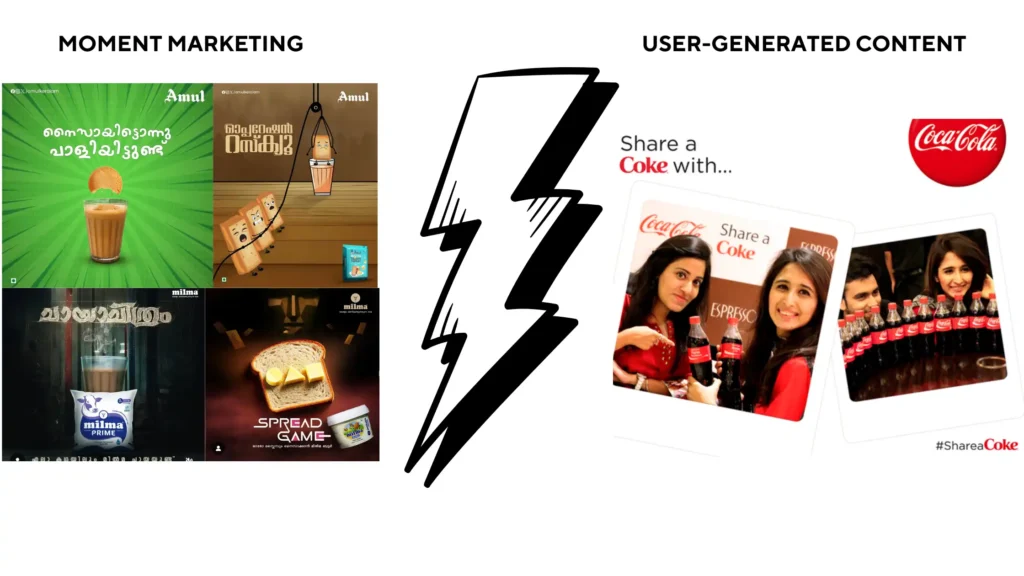The Intersection of Viral Moment Marketing and User-Generated Content: How Brands Encourage Customers to Create Engaging Content

In today’s fast-paced digital world, brands need to keep up with the ever-changing trends to stay relevant. Two powerful trends that have emerged are viral moment marketing and user-generated content (UGC). When these two forces intersect, they create a unique opportunity for brands to increase engagement, build trust, and connect with their audience in an authentic way. But how can brands encourage their customers to create engaging content during viral moments? Let’s break it down.
What is Viral Moment Marketing?
Viral moment marketing is the practice of creating content that taps into real-time events, trends, or viral moments. These could be global happenings like the Super Bowl, pop culture events, or social media phenomena that capture mass attention. The goal is to align your brand’s content with these moments, ensuring it resonates with a wide audience and drives immediate engagement.
A classic example is Oreo’s tweet during the 2013 Super Bowl blackout. The brand jumped in with a clever message: “You can still dunk in the dark,” gaining viral traction by seizing the moment.
What is User-Generated Content?
User-generated content refers to any content created by consumers or fans of a brand. This includes photos, videos, reviews, and social media posts. UGC is incredibly powerful because it feels more authentic and relatable compared to traditional brand-driven content. Customers trust their peers, making UGC a valuable form of social proof.
Brands like GoPro, Coca-Cola, and Starbucks have excelled at encouraging UGC, building strong communities around their products and services by allowing customers to share their experiences.
The Intersection of Viral Moment Marketing and UGC
When viral moment marketing and user-generated content collide, brands tap into the power of authenticity while riding the wave of real-time relevance. Combining these two strategies allows brands to create content that feels both timely and genuine, offering a unique opportunity to engage customers in meaningful ways.
Take the Ice Bucket Challenge, for instance. It was a viral movement where participants, including brands, created UGC to raise awareness for ALS. It wasn’t just the viral moment itself that mattered—it was the active participation of consumers, helping brands gain visibility in an organic and authentic manner.
How Brands Can Encourage Customers to Create Engaging Content
Here are a few strategies for brands to encourage customers to generate content that complements viral moments:
1. Leverage Trending Hashtags and Challenges
Hashtags and challenges are key tools for getting customers involved. By creating a custom hashtag tied to a viral event or challenge, brands can encourage users to participate and contribute content. Hashtags help track engagement and make it easier for people to find and join the conversation.
For example, when a meme or viral challenge takes off, brands can jump in with their own branded hashtag. If the hashtag resonates with users, it can quickly gain traction.
2. Feature UGC on Brand Channels
One of the most effective ways to motivate customers is by offering them the chance to be featured on a brand’s official social media or website. Featuring UGC on brand channels not only celebrates the customers who participate, but it also encourages others to share their content in hopes of recognition.
GoPro is an excellent example of this strategy. The brand consistently shares user-submitted videos on its social media platforms, strengthening the sense of community and inspiring more customers to create and share their own content.
3. Offer Incentives and Rewards
Incentives like contests, giveaways, or exclusive rewards can boost participation in viral moments. When people feel like their content has the potential to win them something valuable, they’re more likely to engage.
For example, Starbucks often runs seasonal campaigns encouraging users to share photos of their drinks for a chance to win a prize. This type of reward system motivates users to create content, further promoting the brand.
4. Encourage Authenticity Over Perfection
In the realm of UGC, authenticity is key. Customers are more likely to engage with content that feels real and relatable rather than overly polished or staged. Brands should encourage users to share raw, genuine moments—whether it’s a quick selfie or an unfiltered video.
Take the #ShareACoke campaign by Coca-Cola, where people were encouraged to share photos of themselves with personalized Coke bottles. The content felt personal and natural, which made it more appealing to users.
5. Collaborate with Influencers to Amplify UGC
Partnering with influencers can significantly extend the reach of UGC. Influencers can encourage their followers to create content around a viral moment, helping the brand spread its message to a wider audience.
For example, brands can collaborate with influencers during viral events to amplify a challenge or social cause. Their involvement lends credibility and attracts more people to participate in the content creation.
6. Capitalize on the Right Moment
Timing is critical when it comes to viral moment marketing. Brands must act quickly to create content that is timely and relevant. Viral moments don’t last forever, so brands need to seize the opportunity while it’s fresh.
If there’s a cultural event or trending meme, the sooner a brand taps into it, the higher the chances of generating buzz. The content should be quick, creative, and align with the tone of the moment to capture the attention of audiences.
Conclusion
The intersection of viral moment marketing and user-generated content presents brands with a powerful way to engage their audience, increase brand visibility, and foster a sense of community. By encouraging customers to participate in trending events, offering recognition, and maintaining authenticity, brands can amplify their message in a meaningful and relatable way.
Incorporating viral moments into a UGC strategy not only keeps your content relevant but also strengthens customer loyalty by giving them a voice in your brand’s story. So, when the next viral moment arrives, don’t just watch from the sidelines—encourage your audience to jump in and be part of the conversation.
